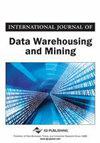基于深度学习的自适应在线智能框架在资产证券化风险控制中的区块链应用
IF 0.7
4区 计算机科学
Q4 COMPUTER SCIENCE, SOFTWARE ENGINEERING
引用次数: 0
摘要
区块链和分布式账本技术引起了法律界和企业的广泛关注。资产证券化是发行人通过将不同的金融资产组合或合并为一组来设计可销售的金融工具的程序。然而,大多数证券化发生在产生应收款的贷款和其他资产上,如各种类型的消费者或企业债务。本文使用基于深度学习的自适应在线智能框架(DLAOIF)讨论了区块链在证券化过程中可能带来的好处。从降低成本、时间和欺诈风险到提高安全性、信任度和准确性,这些好处都是巨大的。在区块链上跟踪金融资产可以减少对信用评级机构的依赖,并允许投资者更仔细地监控资产表现和相关风险。它应该提高投资者的信心,增加二级市场的兴趣。本文章由计算机程序翻译,如有差异,请以英文原文为准。
Deep Learning-Based Adaptive Online Intelligent Framework for a Blockchain Application in Risk Control of Asset Securitization
Blockchain and distributed ledger technologies have attracted massive attention from both legal communities and businesses. Asset securitization is the procedure in which an issuer designs a financial instrument that is marketable by combining or merging different financial assets into one group. However, most securitization occurs with loans and other assets that generate receivables, such as consumer or business debt of various types. This article discusses the possible benefits of blockchain during the securitization process using the deep learning-based adaptive online intelligent framework (DLAOIF). The benefits can be significant, from reduced costs, time, and fraud risks to increased safety, trust, and accuracy. Tracking financial assets on a blockchain can reduce dependence on credit rating organizations and allow investors to monitor asset performance and the associated risk more carefully. It should improve investor confidence and increase secondary market interest.
求助全文
通过发布文献求助,成功后即可免费获取论文全文。
去求助
来源期刊

International Journal of Data Warehousing and Mining
COMPUTER SCIENCE, SOFTWARE ENGINEERING-
CiteScore
2.40
自引率
0.00%
发文量
20
审稿时长
>12 weeks
期刊介绍:
The International Journal of Data Warehousing and Mining (IJDWM) disseminates the latest international research findings in the areas of data management and analyzation. IJDWM provides a forum for state-of-the-art developments and research, as well as current innovative activities focusing on the integration between the fields of data warehousing and data mining. Emphasizing applicability to real world problems, this journal meets the needs of both academic researchers and practicing IT professionals.The journal is devoted to the publications of high quality papers on theoretical developments and practical applications in data warehousing and data mining. Original research papers, state-of-the-art reviews, and technical notes are invited for publications. The journal accepts paper submission of any work relevant to data warehousing and data mining. Special attention will be given to papers focusing on mining of data from data warehouses; integration of databases, data warehousing, and data mining; and holistic approaches to mining and archiving
 求助内容:
求助内容: 应助结果提醒方式:
应助结果提醒方式:


